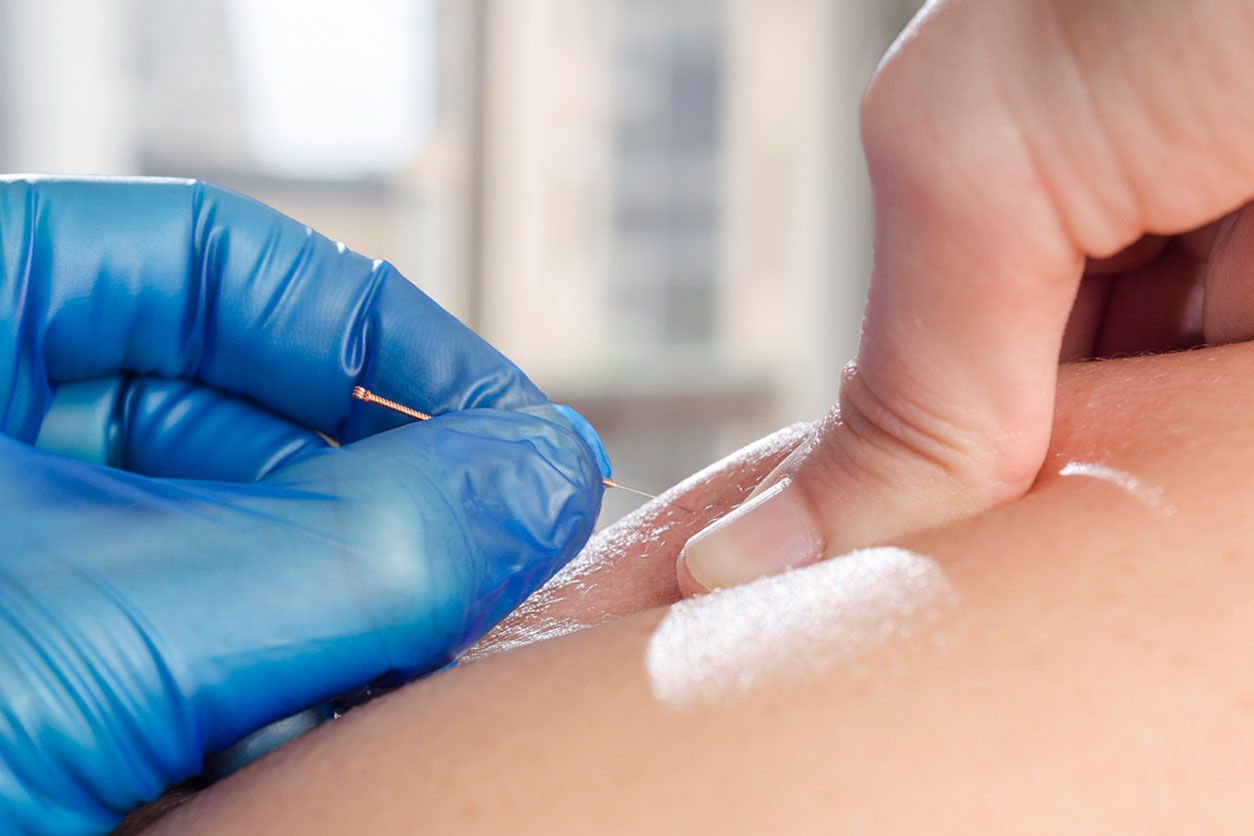Lidocaine or Dry Needling for Pain Management

If you are suffering from pain points in parts of the body and haven’t had success with other treatments, your doctor might suggest you give dry needling a try. This procedure may sound painful or scary, but that is not necessarily the case. It’s a simple procedure that treats trigger points, which can be associated with chronic myofascial (soft-tissue) pain, oftentimes in athletes. Dry needling can be used in conjunction with physical therapy (PT), as well.
Dry needling may include the use of lidocaine, a local anesthetic used to numb nerve endings in the skin, but there are other methods for this type of pain management.
What Are Trigger Points?
Trigger points are small, tender knots that can form in muscles or the fascia – bands of soft, stretchy connective tissue beneath the skin that surround muscles and organs. When stressed or in pain, these points can disrupt function, restrict a person’s range of motion, or cause local tenderness. When dry needling is applied to a dysfunctional muscle or trigger point, it may be successful in:
- Decreasing banding or tightness
- Increasing blood flow
- Reducing local pain
- Improving movement
Dry needling is a minimally invasive way to treat underlying muscular trigger points to manage musculoskeletal pain and even certain movement impairments.
Dry Needling or Trigger Point Injections
Patients seeking a safe, alternative pain-relieving treatment for trigger points may try trigger point injections. As it only takes a few minutes to complete, this procedure is typically done on an outpatient basis.
Patients prepare by positioning themselves comfortably. A specialist performing the procedure will press and gently pinch the skin to locate the trigger point. Once identifying the correct location, the specialist will cleanse the overlying skin, possibly using a topical anesthetic to temporarily numb the area. The physician carefully inserts a needle through the skin and into the trigger point, then injects an anesthetic mixture into the trigger point, which causes the trigger point to relax. If it doesn’t relax the first time, the position may be adjusted for additional injections.
Afterward, the needle is removed. A small bandage may be applied, and patients are sometimes encouraged to stretch and move their muscles after the procedure is complete to minimize any soreness.
Why Is Lidocaine Used?
Some patients may prefer lidocaine patches over injections. Lidocaine is a very common drug that is used for everything from dental procedures to the treatment of discomfort from shingles. In one study, patients treated with dry needling experienced more post-injection soreness than those treated with a lidocaine injection.
The numbing effects of these injections typically occur quickly and can last for several hours. People who would rather avoid needles can also try a lidocaine patch, which may be left on the skin for up to 8 or 12 hours. However, lidocaine injections may only be given under the direct supervision of a doctor. The drug should be avoided in combination with certain medications or by people who are pregnant, making certain procedures more appropriate for some patients.
Dry Needling Is Not the Same as Acupuncture
Understandably, some people confuse trigger point injections with acupuncture. Although they both involve the insertion of needles, they are not the same. Acupuncture is an ancient practice stemming from Eastern medicine, in which needles are left in place for a prolonged period of time. Dry needling is offered by a variety of practitioners, including physiotherapists, and doesn’t involve leaving multiple needles in the body. In addition, dry needling may be used to help evaluate the patient’s:
- Pain patterns
- Posture
- Impaired movement
- Orthopaedic health
Be Sure to Seek Treatment at a Specialty Orthopaedic Clinic in Illinois
Dry needling can be used to treat a broad range of muscular issues causing pain in the shoulder, neck, hip, back – even the heel. It is generally considered a safe and effective form of pain management, but it should be performed by an orthopaedic physician or a specialist with experience treating your type of condition.
At MidAmerica Orthopaedics, patients have access to a team of specialists with a broad range of pain management tools to treat nearly every type of muscular condition. Visit MidAmerica online to learn more. Call (708) 237-7200 to schedule an appointment with one of our specialists.

